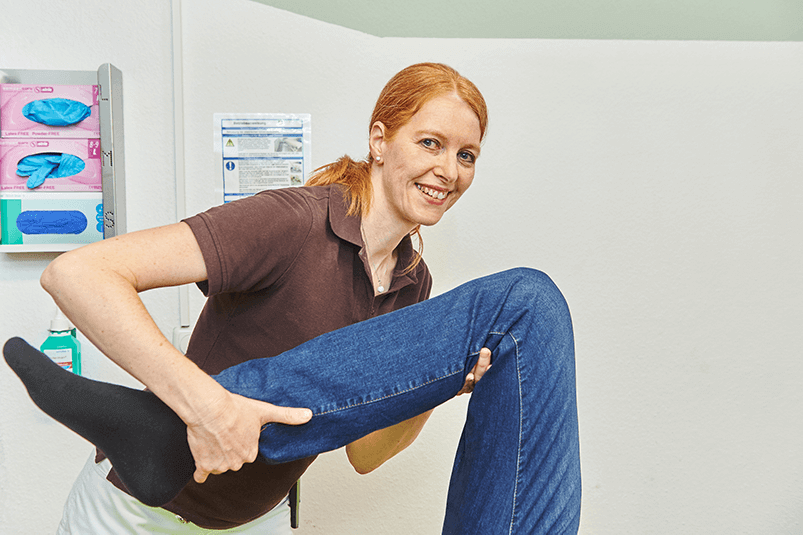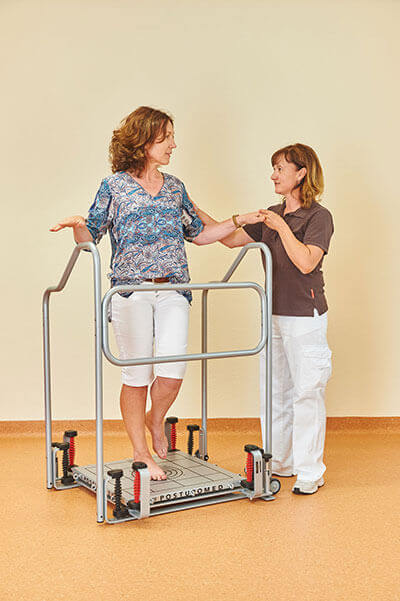There are many different surgical options for the foot (e.g., hallux valgus, arthrodesis, etc.), and the aftercare often looks very similar. The most important goal for you is to move independently after the surgery and get along with the specific orthosis.
There are different possibilities to secure the wound area to relieve the foot at the beginning. A so-called bandage shoe or forefoot relief shoe is used in the case of hallux valgus. This is a type of sandal with a very firm sole and practical hook-and-loop fasteners that can also be put on securely around thicker bandages. These orthoses serve to relieve the strain when rolling over since the toe is not fully capable of weight-bearing at the beginning.
A Vacoped shoe or air walker is often used for ankle surgeries. This looks a little like a ski boot (but weights much less) and is intended to stabilize the foot as a whole, even down to the lower leg. It consists of a plastic shell (with a sole and a part that goes up the lower leg) and a soft inner lining to protect the foot from external pressure.


